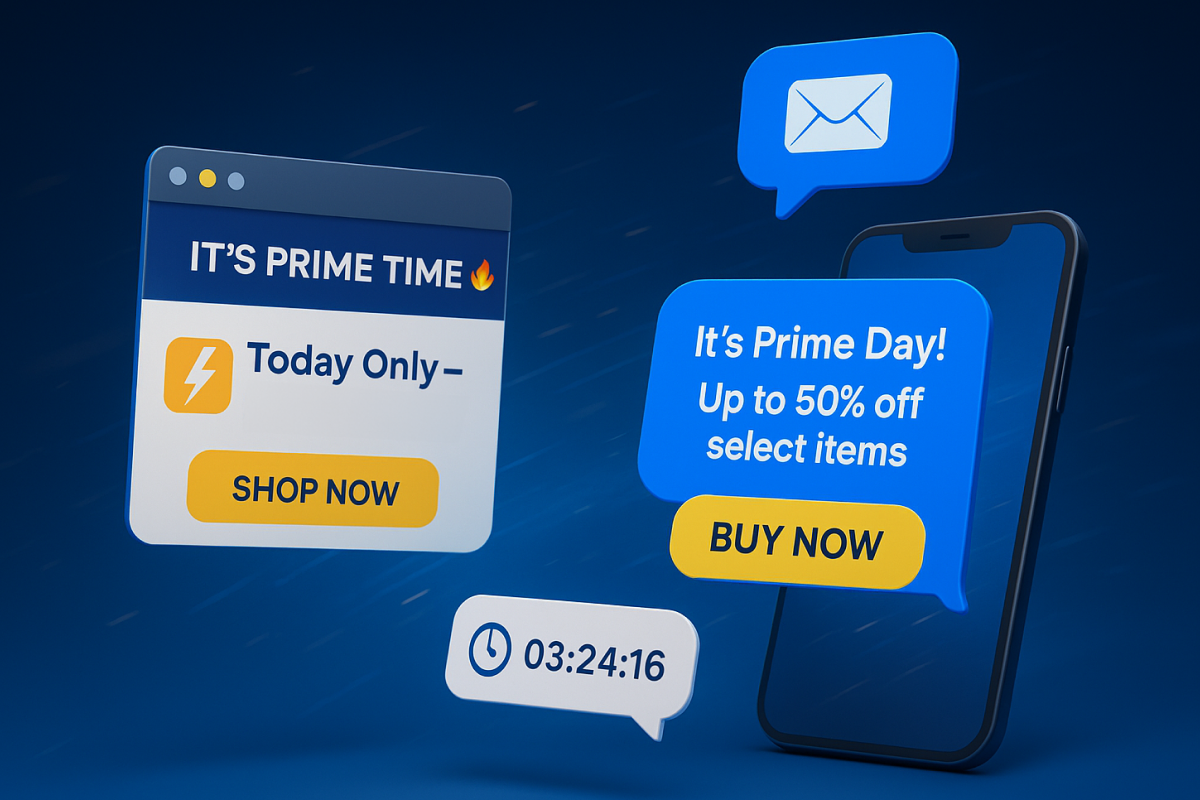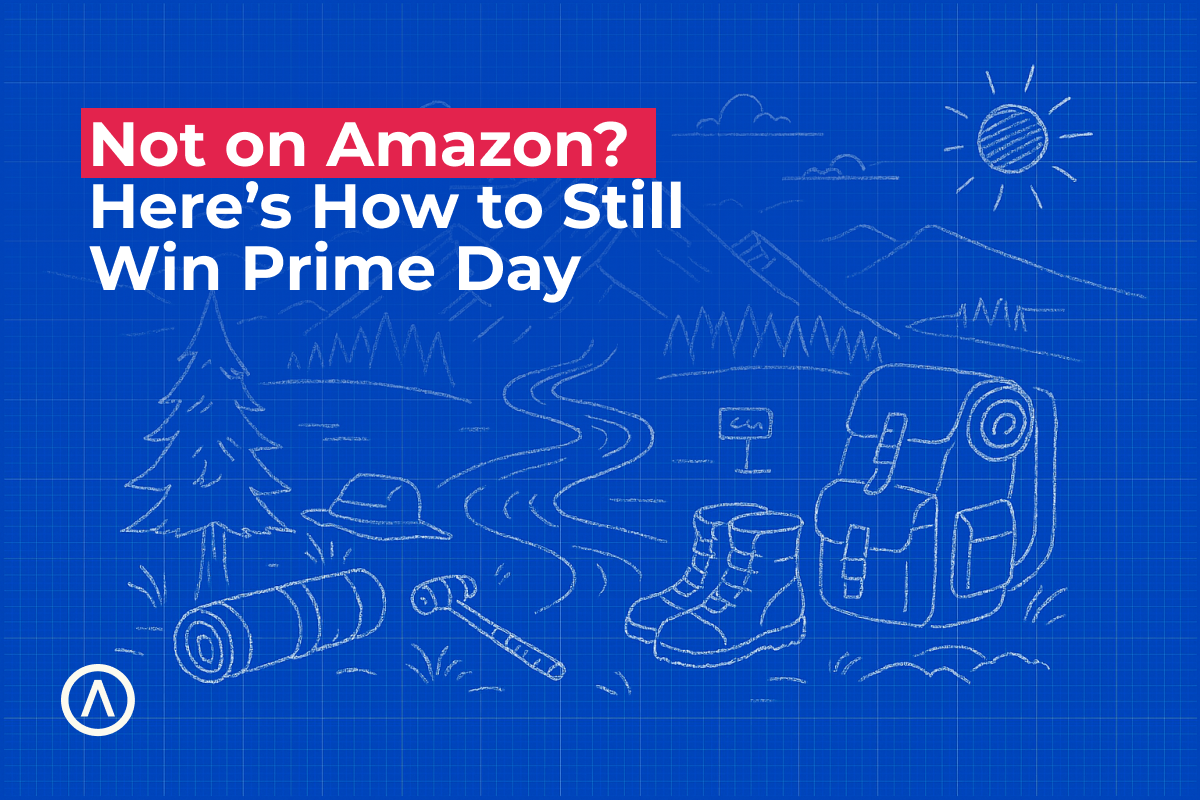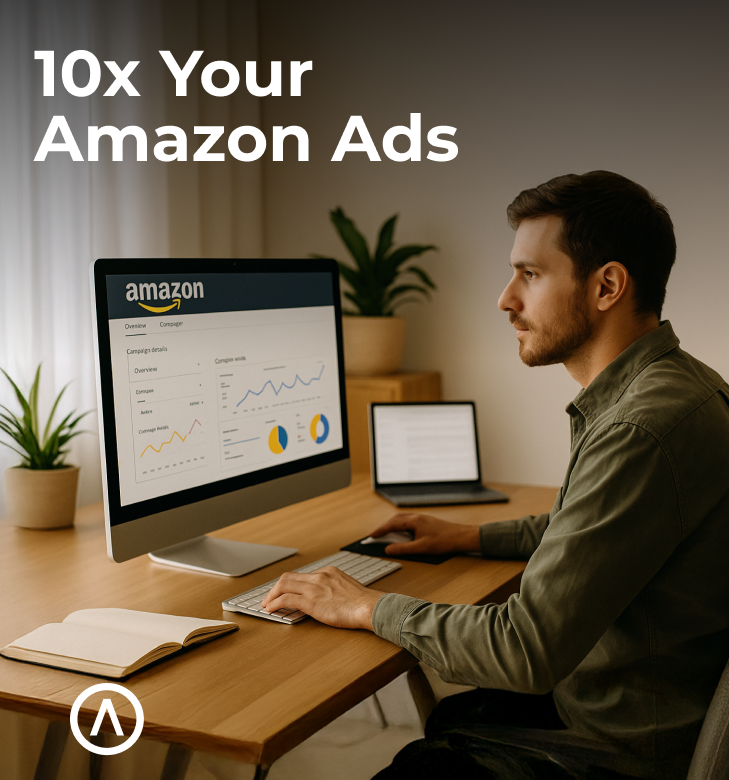Amazon Prime Day may have started as an Amazon-only event, but it’s now a catalyst for the entire retail sector. Each mid-July, consumer spending surges across e-commerce, not just on Amazon. In 2022, Prime members worldwide purchased over 300 million items during Prime Day and saved $1.7 billion thanks to steep discounts (mcfadyen.com).
By 2024, U.S. online shoppers spent a record $14.2 billion in just two days during Prime Day (an 11% year-over-year increase) (qz.com). The takeaway is clear: shopper intent spikes in mid-July across the board, creating a huge opportunity for brands beyond Amazon. If you run a direct-to-consumer (D2C) store, you don’t need to sell on Amazon to benefit – you just need to align your strategy with this wave of demand.
Below is a step-by-step blueprint (with proven tactics and stats) to capture Prime Day traffic for your own D2C site.
1. Run Parallel “Prime Day” Promotions on Your Own Site
One of the most effective ways to ride the Prime Day wave without being on Amazon is to hold your own concurrent sale on your website. By offering attractive deals directly, you can lure in deal-hungry consumers who are in a buying frenzy – while keeping those sales in-house. Many DTC brands now treat Prime Day like a mid-year Black Friday, running special promos on their sites during the same window.
For example, Brooklinen ran a “surprise” sitewide sale during Prime Day 2022, offering 15% off on its own website (mirroring its Prime Day deal on Amazon). “We know there is demand from our customers to shop during this time period. We want to make it convenient by keeping the sale consistent across our site as well as Amazon,” explained Brooklinen’s VP of Marketing.
By 2024, well-known DTC brands from Brooklinen to Casper were routinely launching Prime Day promotions on their sites, treating Prime Day as a crucial sales event outside Amazon’s walls.
Some brands even brand their parallel sales as a distinct mini-holiday. Nutrition bar maker NuGo Nutrition ran a “Better Than Prime Day” sale in 2023 before Amazon’s event. Their emails boldly declared, “Step aside, Prime Day… who needs Prime Day when you can score even better savings right now by ordering directly from our website?” They rolled out limited “lightning deals” with capped promo codes a couple of days early to create urgency. Similarly, candy brand Licorice held a “Licorice Prime Time” sale starting four days pre-Prime Day, using early-bird email blasts to divert shoppers to its own site.
Pro Tip: Frame your sale as “Black Friday in July.” Many retailers now run week-long promotions around Prime Day. Experts suggest extending your sale 2–3 days before and after the Amazon event to catch shoppers who are in deal-hunting mode early and late.
2. Bank on Prime-Day Search Traffic with Paid Ads
Prime Day doesn’t just drive sales on Amazon’s site – it triggers a spillover of searches, clicks, and web traffic across the internet. Consumers scour Google and social feeds for the best deals.
In 2023, online retailers outside Amazon saw a 52% year-over-year increase in clicks during the Prime Day period (impact.com). Search volumes ramp up as early as two days before the event as shoppers actively compare deals across sites. This spike in browsing is a goldmine for D2C brands that prepare smart advertising campaigns.
- Leverage Paid Search Ads: Bid on intent-rich keywords and run Google Search ads aimed at Prime Day deal-seekers. Instead of using “Prime Day” (which might violate platform policies), use hooks like “Summer Flash Sale” or “Exclusive 48-Hour Deal” to capture shopper interest.
- Tap Paid Social Ads: Platforms like Facebook, Instagram, and TikTok will be full of deal discussions. Use paid social ads that echo the urgency of Prime Day – e.g., “48 hours of our lowest prices of the year.” This creates FOMO and drives clicks.
Pro Tip: If you also sell on Amazon, ensure your site’s deal is competitive and emphasize perks Amazon can’t offer: bundles, loyalty points, or free gifts with purchase.
3. Make Use of Influencer & Creator Campaigns to Counter Amazon
Facing Amazon’s massive marketing machine, DTC brands have found an edge through influencers and creators. They generate buzz and “pull” shoppers toward your brand, even as Amazon dominates headlines and ad space.
A well-timed influencer campaign around Prime Day can redirect consumer attention (and dollars) your way.
Tactics include:
- Live Shopping Streams: Host a Prime Day Live stream with a popular creator on Instagram, YouTube, or TikTok.
- “Anti-Prime Day” Messaging: Have creators post messages encouraging followers to “support independent brands” instead of Amazon.
- Timed Drops or Collabs: Launch exclusive bundles or limited-edition drops with creators during Prime Day to capitalize on urgency and scarcity.
Case in point: MrBeast’s Feastables brand generated $10 million in early sales thanks to his creator-powered launch, without relying on Amazon.
Driving traffic is only half the battle – you also need to engage your existing audience. Next, make sure your email and SMS marketing are primed for Prime Day.
4. Engage Customers with Prime Day-Themed Email & SMS Marketing

During Prime Day, your customers are overwhelmed with Amazon ads. Your emails and texts must be timely and urgent to cut through the noise.
Email Tips:
- Use subject lines like “Final Hours: Our Prime Day Deals End Soon!”
- Run a campaign sequence: teaser, launch day, day 2 reminder, final hours
- Emphasize perks of shopping direct: exclusive bundles, loyalty rewards, or early access
SMS Tips:
- Announce the sale start: “Prime Day Deal: 30% off sitewide! Shop now”
- Highlight daily or limited-time offers
- Use segmentation for higher conversions (e.g., VIP-only discounts)
Lastly, consider how your offer strategy itself can differentiate your brand during Prime Day. Beyond standard discounts, think bundles, exclusives, and perks that Amazon can’t match.
5. Offer Bundles, Exclusives, and Timed Drops to Stand Out
In a sea of one-off discounts, crafting unique product offerings can set your Prime Day sale apart.
Ideas include:
- Bundle Deals: Curate themed product bundles with a special discount.
- Exclusive Drops: Launch limited-edition products or colorways during Prime Day.
- Loyalty Perks: Offer extra rewards like double points, free gifts, or VIP access to deals.
Together, these strategies (bundles, exclusives, loyalty rewards) create a differentiated experience that can captivate customers. You’re not just price-matching Amazon; you’re offering something more.
Key Takeaways
- Prime Day = Opportunity (Even Off Amazon). Your audience is primed to shop in mid-July. Give them a compelling reason to do it on your site. The overall e-commerce surge is real – in 2023, non-Amazon retailers saw a 6.1% jump in sales during Prime Day, totaling $12.7 billion in revenue outside Amazon (impact.com).
- Run Your Own “Prime Day” Sale. Don’t cede the stage entirely to Bezos. Launch a parallel promotion with comparable discounts. Many DTC brands now treat Prime Day like a summer Black Friday, and those who did saw significant midsummer revenue boosts.
- Capture the Traffic Deluge. Prime Day shoppers make multiple stops – nearly 35% of Prime Day shoppers in 2024 also bought from Walmart’s or Target’s concurrent sales (emarketer.com). Through savvy Google and social ads, you can become one of those stops.
- Leverage FOMO and Community. Influencers, affiliates, and your own customer community can amplify your message. You might not have Amazon’s ad budget, but authentic excitement (a creator’s live stream or a loyal customer email blast) can cut through the noise and drive meaningful sales.
- Own the Customer Relationship. Every Prime Day order on your site means new customer info for future marketing. Use Prime Day to grow your email/SMS list and pixel your new visitors for retargeting. This builds your marketing reach for Q4 and beyond.
Ready to Win Prime Day — Without Amazon?
Prime Day 2025 is poised to be the biggest yet – and while Amazon will grab the headlines, your D2C brand can thrive in its glow with the right strategy. By planning ahead, acting boldly, and executing these steps, you can siphon off a portion of that Prime Day frenzy and turn it into ROI for your own business. Now is the time to get your game plan ready, so when the mid-July shopping surge hits, your brand will be front and center to capture the moment.


.png)






.png)
.png)












